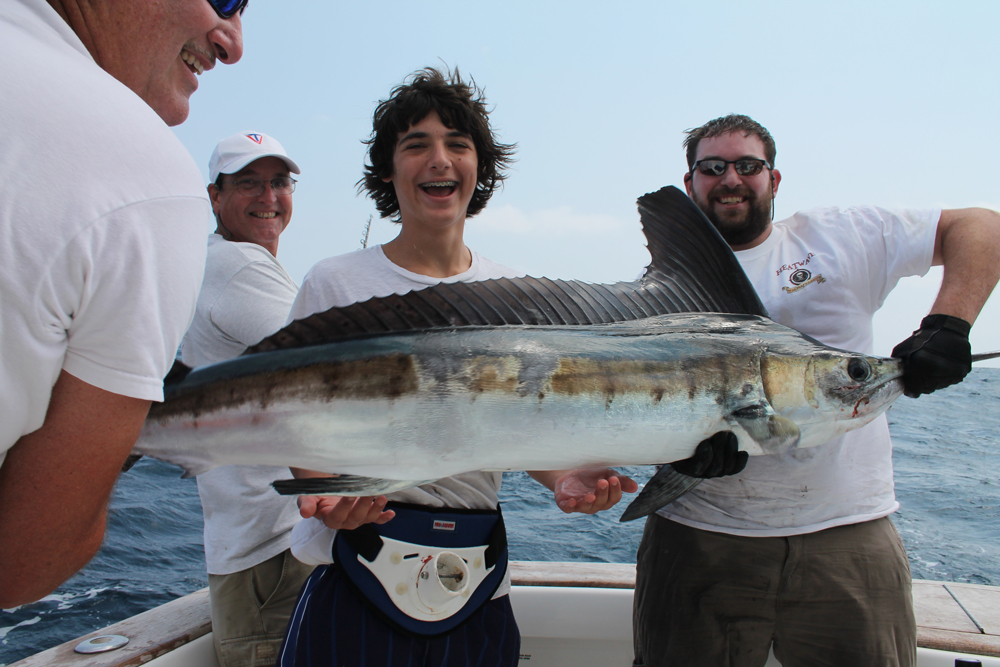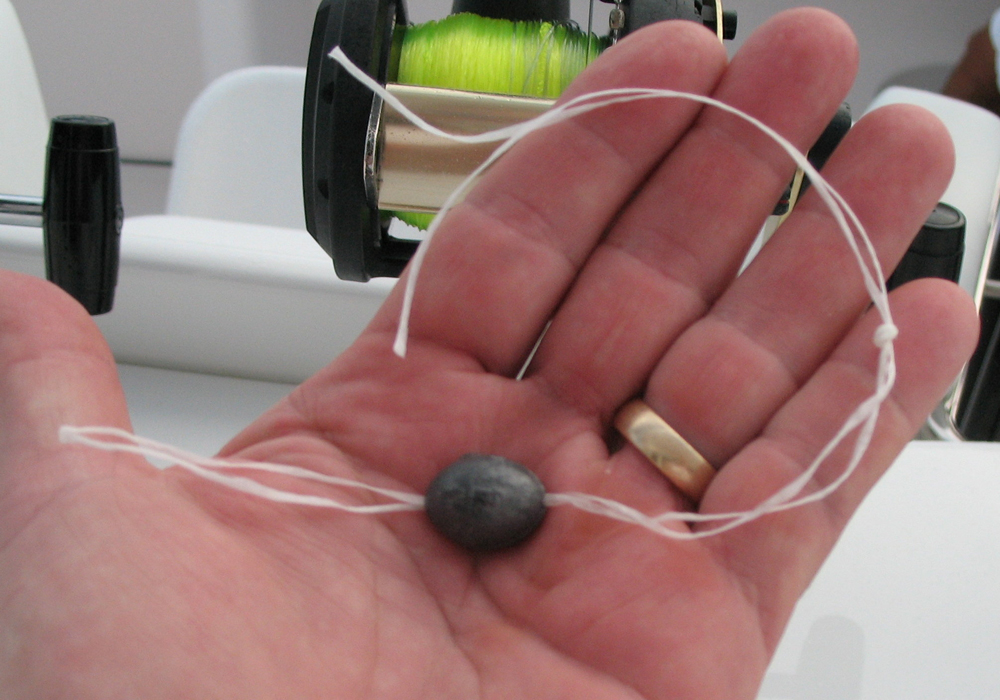Fishermen are amazingly creative when it comes to rigging baits, especially baits for billfish. There are several methods to rig ballyhoo on circle hooks, and they all may work. Some people use springs, some use rubberbands, and some stick with the traditional copper wire. However, the “X rig” stands apart from the pack—it’s quick, simple and provides a great swimming action.

Snelling circle hooks to the leader is standard operating procedure. Why snell instead of crimp? Snelling does not allow the hook to move or swing on the leader. This results in the hook being stationary when coming to the corner of the fish’s mouth, which translates into a higher hookup percentage. And what angler does not want a higher hookup percentage, when it comes to chasing marlin? (For instructions on how to snell a circle hook, check out this How to Snell a Circle Hook video).
Typically used for white marlin, the rig is constructed from a six foot length of 80 pound monofilament or fluorocarbon leader with an Eagle Claw 8/0 circle hook at one end, and a small barrel swivel at the other. Once these rigs have been constructed, they get crimped to 23-foot wind-on leaders on trolling outfits. Then the rods can be stowed—one of the nice things about ballyhoo circle rigging with the X rig is that the ballyhoo themselves will not be needed until it’s time to put lines in the water, so you can leave the rigs in place when the rods are put away at the end of the day. For now, you can simply rig up your rods with this leader, prep those ‘hoo separately, and leave them in the bait-box until it’s time to fish.
Prepping the Ballyhoo
Prepping ballyhoo for a circle hook rig starts the same as any for other type of ballyhoo rigging. Squeeze out the poo, pop the spine scales to along the back, and cut the bill off straight across leaving about a quarter of an inch. Make the cut straight—if it’s uneven, the ballyhoo may not swim properly.
Salting down the ballyhoo or placing in a brine is an option. Brining your ballyhoo will toughen up the bait so it will last a long longer, but it will also be stiff, and potentially lose some swimming action. Most of the time if you’re trolling at five knots for billfishing with a natural bait spread, brining isn’t necessary. But if these ballyhoo are used in a mixed spread with artificial lures and speed will be increased accordingly, salting the ballyhoo to toughen them up is advised. Truth be told trolling speed should be set by watching the baits and lures, and when they look natural swimming, your speed is correct—though you need to remember it will change depending on whether you are running into, with, or across the current.
Tying the X Rig
Take a two-foot piece of wax rigging floss (such as Gudebrod 35- or 70-pound), fold it in half, and insert it through the appropriate weight egg sinker. Normally, this will be a quarter-ounce for very small (dink) ballyhoo, and up to one ounce for large horse ballyhoo.

Place the loop end of the floss over the head of the ballyhoo, and slide it behind the gill plates. Then center the egg sinker under the gills, and bring the tag ends over top of the remaining bill and tie a half-hitch. Now pull the tag ends to seat the knot, which will secure the egg sinker firmly under the gills. Next, tie another half-hitch to prevent slipping. Run one tag-end through the eye sockets in one direction and the other tag end in opposite direction.

If this all reads clear as mud and you’re having a tough time understanding which tag end goes where, for visual step by step instruction head for YouTube. Search “John Unkart how to rig ballyhoo for billfish with circle hooks”, and you’ll see this process right on the computer or phone screen.
When you arrive at the fishing grounds and are ready to start trolling, insert the circle hook under the knot at the center of the “X”. That’s all it takes, and you’re in business and ready to catch fish.
When the Fish Strikes
Remember that your hook-up percentage can be increased by not immediately pushing the drag to the strike position when a billfish takes a ballyhoo on a circle hook. Start with the drag set as light as possible without line creep and on the bite, point rod at the fish letting line “fall” off the rod tip with no pressure, allowing the marlin to swim with the bait. Count to five and s-l-o-w-l-y ease the drag into the strike position. As the weight of the billfish is felt, slowly raise the rod to a fighting position. A gradual drag increase prevents the circle hook from sliding quickly past the corner of the mouth, and the five seconds gives the marlin time to turn before drag tension is increased, assisting in solid corner-of-the-mouth hookups. Once the learning curve of rigging and using ballyhoo on circle hooks is worked through, your hookup percentage will increase over using J-hooks.

-by John Unkart
For additional rigging tips and techniques check out John Unkart's books, Offshore Pursuit and Saltwater Tales available on Amazon.
Editor's note: This article was originally published in August of 2017 and was last updated in June of 2024.